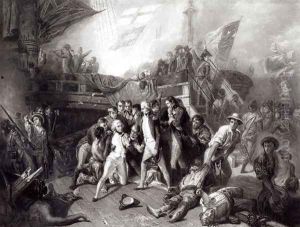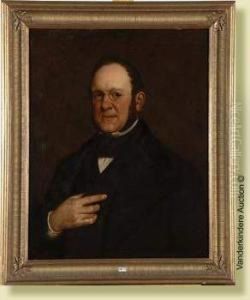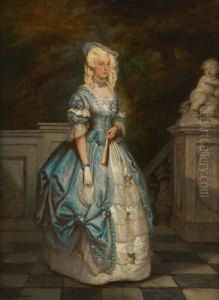Slingeneyer, Ernest Paintings
Ernest Slingeneyer was a Belgian painter who was born on August 25, 1820, in Brussels. He was known for his historical and allegorical paintings. Slingeneyer studied at the Académie Royale des Beaux-Arts in Brussels under the guidance of François-Joseph Navez, a Neo-Classical painter who had a significant influence on his early work. He also took inspiration from the works of the Old Masters, which is evident in his approach to composition and his technical execution.
During his career, Slingeneyer enjoyed considerable success and recognition. He was particularly well-known for his grand historical scenes, often imbued with a sense of drama and meticulous attention to detail. His works often featured subjects from ancient history and mythology, as well as events from the more recent past, such as the Renaissance and the Napoleonic era. Slingeneyer's paintings were characterized by their academic style, reflecting the dominant artistic trends in Belgium during the mid-19th century.
Ernest Slingeneyer's reputation extended beyond Belgium, as his works were exhibited internationally. He participated in various exhibitions, including the Paris Salon, where he received critical acclaim. His paintings also found their way into notable collections across Europe, and he was commissioned by various European nobility and prominent figures of his time.
Slingeneyer's contributions to the arts were recognized with several honors. He was knighted and received the Order of Leopold, one of the highest honors in Belgium, which acknowledged his achievements in the field of art. Despite the shift in artistic tastes towards the end of the 19th century, with the rise of movements such as Impressionism, Slingeneyer remained committed to the academic tradition.
Ernest Slingeneyer passed away on March 31, 1894, in Saint-Josse-ten-Noode, Belgium. Although his name may not be as widely recognized today as some of his contemporaries, his work remains a part of the rich tapestry of 19th-century European art. His paintings are held in various museums and private collections, serving as a testament to his skill and dedication to the academic style of painting.



